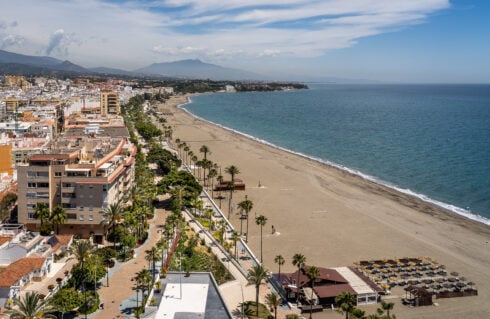THERE is a lot of economic anxiety around the world at the moment. This comes after Trump’s April 2 announcement of tariffs on every single US trading partner.
Liberation Day’, as he called it, threw the multi-trillion euro global trading system in the air. The uncertainty it created hasn’t subsided – if anything it has grown.
The massive impact of those policies is impossible to measure. The global economy is incredibly integrated, not just in terms of goods but also services. As the focal point of this tumult, the USA will be most affected, but no country will escape its impact.
Currently, Trump has suspended full implementation of these tariffs, opting instead for a temporary 10% rate during a 90-day ‘grace period’ intended for renegotiation. Over a month in, however, no trade deals have emerged. Even close allies like Japan are pushing back against U.S. demands, signaling a likely summer of economic instability.
READ MORE:
- Real estate regulations in Dubai should serve as a model for Spain, writes property expert ADAM NEALE
- Clock is ticking: Is it the end of holiday rentals in Spain? asks the Property Insider Adam Neale
- THE GOOD, THE BAD, AND THE IRRESPONSIBLE: The government’s housing reforms are a terrible idea, writes Property Insider Adam Neale
- Ever higher: Marbella’s luxury market set to continue growth, writes Property Insider Adam Neale
In Spain’s case, the direct effects may be limited. The country runs a $10 billion trade deficit with the US, importing $28 billion and exporting $18 billion in 2024. The US is only Spain’s fifth-largest trading partner.
A CaixaBank report estimates the direct impact of a 10% tariff at €1.39 billion, or 0.1% of GDP. At a 20% tariff rate, the impact could reach €3.18 billion (0.2% of GDP). These are manageable figures, especially when weighed against Spain’s strong growth – 3.2% in 2024 and a projected 2.5% in 2025, according to the IMF.
The Spanish government has acted swiftly, announcing a €14 billion aid package for affected industries and accelerating trade diversification efforts. Recent summits with Vietnam and China highlight this pivot.
What about real estate?
Despite the turbulence, there are reasons to remain optimistic about Spanish real estate.
For one, U.S. instability may boost demand from Americans relocating abroad. The number of Americans purchasing property in Spain nearly tripled from 1,089 in 2019 to 2,800 in 2024. They now account for 2% of foreign home purchases.
Americans also spend the most per square metre – €3,390 – well above average prices in Spain, though still a bargain compared to U.S. cities.
Marbella and the Costa del Sol remain hotspots for these buyers. But it’s not just Americans showing interest. Chinese buyers have grown from 4,370 in 2019 to 5,220 today. Although they pay about two-thirds as much per square metre as Americans, their presence reflects broader global interest in Spanish property.
Adding to this is a shift in tourism patterns. Reports of Europeans detained by U.S. border agents have hurt America’s image. In March, before tariffs took effect, European travel to the U.S. had already declined by 17%, with overall foreign tourism down 12%.
Many of these travelers will stay in Europe—and increasingly, in Spain. These higher-income tourists contribute not just to hospitality revenues but may also become property investors, particularly in coastal regions.
Even before this turmoil, the Spanish real estate market was already outperforming much of the EU. Unlike many of its neighbors, Spain continues to see population growth, with 450,000 new residents in 2024, creating 112,000 new households.
Though building permits are finally rising after years of stagnation, supply has struggled to keep up with demand. As a result, real estate prices increased by nearly 6% last year. In high-demand areas like Malaga province, prices jumped 14%, and in the city of Malaga, a striking 22%.
A recent CaixaBank study noted that 2024 was the first year in a long time where new construction permits exceeded new household formation – a 16.5% year-over-year increase. This signals a healthy adjustment in supply.
With the European Central Bank expected to continue easing interest rates, mortgage costs may fall toward 2%, further boosting affordability and activity in the housing market.
Spain remains one of the least exposed EU countries to U.S. trade shocks—its exposure is half the EU average. The government’s rapid response, economic resilience, and proactive diversification are all encouraging signs.
If global turmoil accelerates foreign interest in Spanish real estate – particularly from Americans and Chinese buyers—and tourism rebounds locally, Spain could emerge from this period stronger. The combination of moderate risk, quick policy action, and continued housing demand paints a promising picture for 2025.
If managed well, the current crisis might even position Spain as a leader in a new, reshaped global trade landscape. That would be excellent news for real estate.
Click here to read more Adam Neale: Property Insider News from The Olive Press.








